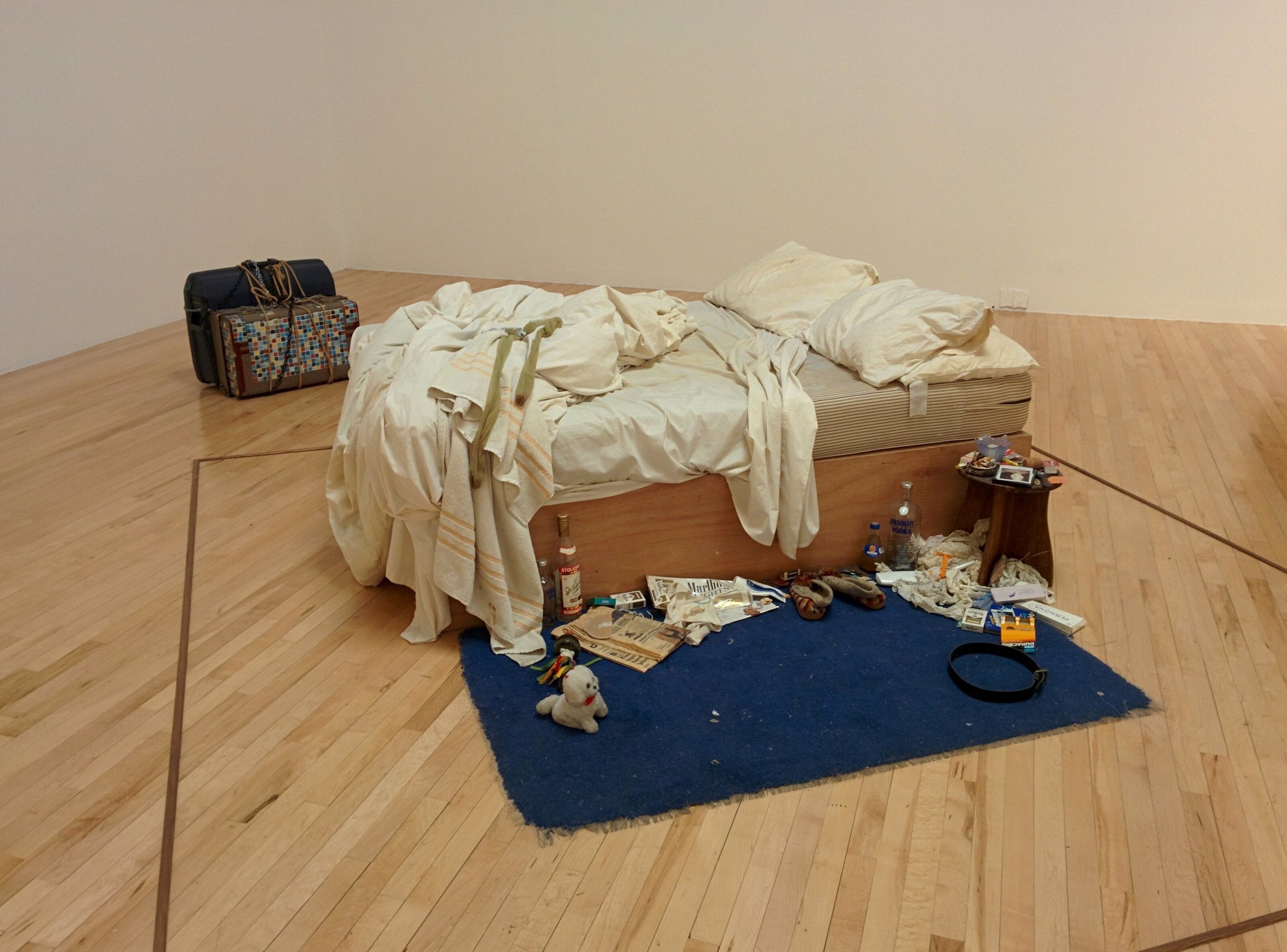Tracey Emin’s My Bed: A Visual Archive of the Bodily Experience within Space and Place
Words by Evie Brett
With the opening night of the Norman Rea Gallery’s next exhibition, entitled Body Architect, fast approaching, my mind was immediately drawn to perhaps one of the twentieth century’s most contested artworks to visually record the existence and experience of the body: none other than Tracey Emin’s 1998 installation, My Bed. This piece is challenging, complex, and polarising on a multitude of fronts: simultaneously acting as a modern memento mori; being referred to as a ‘death bed’ by the artist herself; being the product of a severely depressive phase in her life, whilst also being imbued with a fluidly dynamic sense of life; actively displaying a collection of objects that reference the determined vitality and function of the body (namely, tissues, empty packets of the pill and condoms). Standing in solitude, frozen in a captured moment, My Bed has been the centre of much criticism, forcing the viewer to question and explore how the body interacts within the space it's in and the importance of visually archiving that experience, whilst more generally shaking the very foundations upon which the definition of art rests.
Tracey Emin
In 1998, following a traumatic breakup, Emin took to her bed and stayed there for a total of four days in a state that fluttered between sleep and semi-unconsciousness, consuming no food or drink other than alcohol. On the fourth day, after getting up to have some water, she turned and bore witness to the chaotic ecosystem that she had inadvertently created. As the stained bedsheets lay strewn across the bedframe and the detritus of domesticity settled haphazardly across her floor, a time capsule of those days had been visually recorded. She rushed to her studio to reassemble the scene, thereby documenting the most mundane experience of the body, that of life.
Tracey Emin’s My Bed, 1998
The installation was initially exhibited in the Tate Britain in London in 1999 where it was able, through motifs of the body, to construct an image of the human form without its physical presence. The movement of the body was conveyed through the tossed sheets and pillows, from which we can imagine the motion of Emin as she rose from her bed, objects that remind us also of the body’s rhythmic and repeated actions of sleeping and waking. The elements of clothing like belts and shoes along with the pregnancy test and condoms reference both the size and shape of the body itself and its relationship to others, whilst the remnants of food and drink, through empty packets and bottles, remind us of the installation’s ‘snapshot quality’, preserving a moment in mundanity, in which the body existed.
A close-up of Tracey Emin’s My Bed, 1998
My Bed thus echoes the importance of spaces; how they can hold memory and in themselves evoke meaning. In a 2015 interview, Emin expressed her realisation that her bed had projected her body and thus saved her life, providing both warmth and mental nourishment in the midst of, which she has deemed, “a breakdown of mess and decay”. In what may to some seem like a generic messy bedroom, Emin recognises her lifeline, a space infused with appreciation, and it is this, according to the rationale of George Dickie, that transitions the scene of the messy bed into the category of installation, thereby moving it into a space where one can consider it art. Thus viewing My Bed as a work of art directly challenges critics of the time who argued otherwise, in turn demonstrating the powerful and emotionally charged role that space and place play in the bodily experience.
Tracey Emin’s My Bed, 1998




